“Some people only see that I’m white ignoring skill / ‘Cause I stand out like a green hat with an orange bill / But I don’t get pissed / Y’all don’t even see through the mist / How the fuck can I be white / I don’t even exist…” –Eminem, “Role Model.”
For the past 13 years, Eminem has charted a course that will likely cement him as one of the most critically acclaimed and commercially successful Hip Hop artists ever. In 2009, Nielsen SoundScan crowned Em as the best selling artist of the aughts, with sales of over 32.2 million albums. Yet, any discussion with Eminem most likely starts with the proverbial elephant in the room: race. In case you haven’t noticed, Em is white, and black males comprise the bulk of Hip Hop’s performing artists. Whether you want to break it down by the top 200 albums, or the top 100 singles, as of July 31, only three white performers were found on each Billboard chart. Eminem and Yelawolf held the only spots on the Top 200 Albums chart, while Kreayshawn was the lone contributor on the Top 100 Hip Hop/R&B Singles chart.

I don’t think it’s necessarily fair or accurate to call being white an advantage; although it certainly makes an emcee stand out, as Em pointed out on “Role Model.” That makes it all the more interesting that, as Hip Hop stands on the cusp of another one of the generational shifts that all aspects of popular culture go through roughly every ten years, a crop of younger, black emcees have found commercial and critical success using Eminem’s blueprint of rhyming about another taboo topic—teen angst.
Hip Hop’s History Of Teen Angst
“Motherfucker I was born with pain / My moms and my pops passed it down to me / So don’t talk to me about can I feel yours / ‘Cause I ain’t feeling you at all / Your pain isn’t pure / You crying ‘cause you broke from the projects / That’s not pain that’s emotions / You a bitch…” –Prodigy “You Could Never Feel My Pain.”
Plenty of emcees have rhymed about their teenage years. And this doesn’t include the gimmicky “I Missed The Bus” fare offered by tween acts like Kris Kross. Some of the more notable examples were even teenage emcees, including Lil Wayne, Illegal, Da Youngstaz and Juvenile Delinquintz. But, most of those acts never achieved the rare combination of commercial and critical acclaim while they were still teenagers. In the case of Kris Kross—teens who weren’t critically embraced by adults—it may have had something to do with the fact that they couldn’t curse. For Juvenile Delinquintz and Illegal, it may have been the fact that they scared off their largest demographic—suburban teenagers with disposable income. Lil Wayne may be one of the few exceptions, as his Tha Block Is Hot eventually went platinum.
Slightly older emcees have rhymed about their teenage years, but you can make a solid argument that their offerings have been mislabeled as “Gangsta Rap.” Such broad generalizations dismiss a song like Wu-Tang Clan’s “C.R.E.A.M,” where Raekwon claims he and his crew were “pulling out gats for fun,” even though he gives the real motivation for brandishing firearms before and after that line. He was the product of a single parent home, adjusting to new surroundings (“Moms bounced on old man / And then we moved to Shaolin Land”), and he was tired of wearing the “same damn Lo sweater.”
While writing “C.R.E.A.M.” Inspectah Deck was 22 and recently removed from his teenage years. The close proximity allowed him to go full-on Emo, spitting, “Though I don’t know why I chose to smoke sess / I guess that’s the time when I’m not depressed / But I’m still depressed / So I ask what’s it worth / Ready to give up so I seek the old earth.”
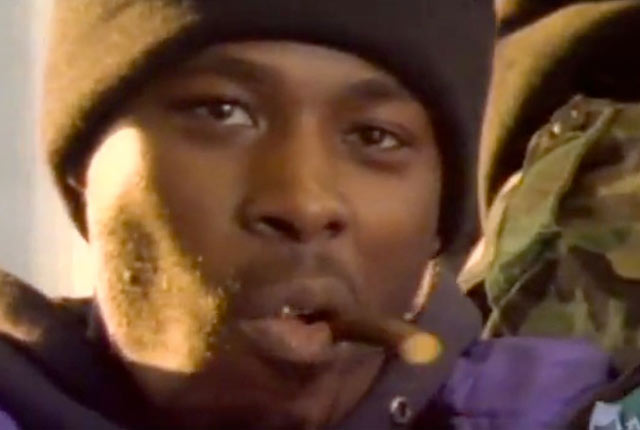
“C.R.E.A.M.” only becomes “Gangsta” when the guns are drawn and people start getting locked up. Before those moments, Rae and Deck rhyme about the same type of teenage angst that Eminem made a killing off of for the first four years of his career. The poverty that sometimes comes with living in a single parent home, being ridiculed by one’s peers, and using illegal drugs to cope with depression are very much a part teen angst. Put the same subject matter behind some power guitar chords, and you’d have a hit for Paramore or the now disbanded Fall Out Boy. In the case of Wu-Tang Clan, Inspectah Deck and Raekwon just masked those very vulnerable emotions behind the veneer of traditional, black male stereotypes of masculinity.
You can make the same argument for Boogie Down Productions’ “Love’s Gonna Getcha,” E-40’s “Hope I Don’t Go Back” and any number of Hip Hop songs. In each case the artist is dealing with issues of teen angst, but they quickly move on—usually within a few bars of the same verse—to explain how they overcame them. The pain of being poor and/or feeling alone segues into the success they achieved in later years. As KRS-One pointed out in the BDP song mentioned above, “Where I’m from if you’re soft you’re lost / To be on point is to roll with force…”
Eminem And The Perfect Retail Storm
Fast forward to 1998, and Marshall Mathers was developing a blueprint for success. His 1997 run on California radio station KMEL’s “Wake Up Show” proved he had a technical precision that put him far ahead of that year’s crop of emerging emcees. In that regard, he was no different than other guests of the show like Ras Kass or Chino XL. But through the coercion of Interscope Records founder Jimmy Iovine, Em was able to become more palatable and tap directly into the teen market. Interestingly enough, Eminem was from a fairly rough section of Detroit. And there are incidents before and after 1998 that prove he was not opposed to any physical violence if necessary. But he rarely rhymed about it or glorified it in anything but obviously fictional terms.
Instead, during his run from 1998 through 2005, Eminem often used self-deprecation and humor as a lure of sorts. If you weren’t enough of a Hip Hop aficionado to pick up on his intricate rhyme patterns, then his catchy, melodic choruses and sense of humor would likely draw you in as a casual fan. Go back and listen to “My Name Is,” which was a last minute add-on to The Slim Shady LP. Its humor borders on being hokey. If you’re not a serious Hip Hop fan, you can easily get lost in the jokes about Debbie Mathers’ A-cup and Marshall’s chronic masturbation to pick up on the deceptively complex, four syllable cadences.
“All my life I was very deprived / I ain’t had a woman in years / My palms is too hairy to hide / Clothes ripped like The Incredible Hulk / I spit when I talk / I’ll fuck anything that walks / When I was little I would get so hungry that I would throw fits / How you gonna breastfeed me mom / You ain’t got no tits…”
From a technical perspective, Eminem was head and shoulders above most of his peers. But you don’t sell 10 million copies of an album (The Marshall Mathers LP and The Eminem Show sold 10.2 million and 9.8 million copies respectively) strictly on technical merits. If so, Chip Fu of the Fu-Schnickens would be rolling in dough right now. Timing is everything. And during one of Hip Hop’s generational shifts—in Em’s case, the post “Golden Era” span that ran from 1998 through 2005—some of his biggest hits involved him simply emoting. This also coincided with a time when music sales peaked, and teenagers were buying more music than ever. According to the RIAA, recorded music sales reached nearly $14 billion in 1998. Combine this with an estimate by Nielsen that teenagers were spending 18.5% of their disposable income on music, and what you get is a marketplace ripe for the picking.
During this sales boom, Eminem was also using a veneer to cover most of his overtly emotional material. But his was humor and self-deprecation, which appeal to teenagers just as much as the angst you hear on “Role Model” and “The Way I Am.” Instead of drawing the guns, Em would just make fun of himself or admit to taking an ass whipping—things that weren’t particularly popular subject matter even during the Golden Era. That’s not to say Em was pimping kids out of their allowances—Pop acts like Backstreet Boys, N’Sync and Britney Spears were more than happy to perform that duty. And I think that’s a big part of why Eminem took shots at the above acts anytime the opportunity presented itself. What I am saying is that, unlike his black counterparts, Eminem didn’t quickly apologize for or explain away his angst. In turn, the large crop of teenagers who were purchasing music at the time, found him more relatable and spent lots of money buying his albums. It’s not rocket science: if you can appeal to a wide audience of people, you’re likely to sell more albums. And few things appeal to teenagers other than angst.
Eminem’s Influence On Drake, B.o.B And Other Post-2005 Emcees
Eventually even Eminem couldn’t sustain his breakneck pace. The death of his friend Proof, mounting legal issues and a drug problem that was clearly more serious than most people thought, caused Eminem to take an extended hiatus. In the meantime, we would learn something that should have been obvious—Eminem’s angst was influencing young Hip Hop fans of all races and backgrounds.
Two of the more commercially successful Hip Hop artists in recent years have clearly been influenced by Eminem’s approach to expressing his emotions. And maybe because of that influence, the often reclusive Em has granted them what was once the hardest cameo to secure in the business. In 2009, Shady raised his profile on “Forever,”  alongside Kanye West, Lil Wayne and Drake. Both West and most notably Drake followed Eminem’s blueprint of emotional vulnerability. Drake has arguably suffered more from the wrath of those who prefer that their moments of lyrical insecurity be quickly followed by a stickup a la Raekwon.
alongside Kanye West, Lil Wayne and Drake. Both West and most notably Drake followed Eminem’s blueprint of emotional vulnerability. Drake has arguably suffered more from the wrath of those who prefer that their moments of lyrical insecurity be quickly followed by a stickup a la Raekwon.
Most (possibly even Drake himself) would agree that lyrically Drake can’t hold a candle to pre-Relapse Eminem. But a huge part of Drake’s commercial success lies in his ability to push the envelope by surpassing Em in terms vulnerability. Listen to the following rhyme from “Say What’s Real.” Would you be at all surprised if the same tweens who watched “Degrassi: The Next Generation” weren’t drawn to the former Wheelchair Jimmy emoting over a Kanye West beat as they navigate through their awkward teenage years?
“Why do I feel so alone / Like everybody passing through the studio / Is acting in character as if he acting out a movie role / Talking bullshit as if it were for you to know / And I don’t have the heart to give these bitch niggas the cue to go…”
There’s no veneer there—no self-deprecation and no black, male machismo. Those bars are one step away from Jon Cusack holding up the boombox in Say Anything. But those bars are also quite commercially viable. Even after freely giving away the So Far Gone mixtape “Say What’s Real” appeared on, a retail version of the mixtape-turned-EP went platinum. And Drake managed to sell another million plus copies of the Thank Me Later album that followed it.
Similarly, Shady disciple B.o.B attempted to out-emo Eminem on a track that featured Em. Backed by a brooding piano, and Hot-Topic mainstay Hayley Williams of Paramore, B.o.B painted his emotions in broad strokes, rhyming, “Let’s pretend like it’s ’98 / And I’m eating lunch off a Styrofoam plate / Tryin’ to be the next rapper coming out The A / Hoping for a record deal to ignore my pain…”

B.o.B was rewarded for his efforts with the number one album in the country. And while the younger crop was studying Eminem, the elder emcee was taking notes too. Most people’s formal introduction to producer Boi-1da came in 2006 on Drake’s Room For Improvement mixtape. But, soon, Eminem would enlist the Canadian boardsmith for more of his solo recordings.
For me, and presumably the people behind the Drake and B.o.B backlash, those “Airplanes”  rhymes make all the difference. Pain is a universal emotion, and there’s really no need to dumb it down or generalize it. While Eminem fans may have been hooked in by his angst-driven rhymes, they were always balanced with substance, delivery and songs like “My Fault,” that addressed grown ass man problems. Maybe you can’t quantify someone’s struggle. But as a paying listener, I’ll always gravitate toward a song about “real life” problems of poverty and death than someone bitching about feeling socially awkward or alienated.
rhymes make all the difference. Pain is a universal emotion, and there’s really no need to dumb it down or generalize it. While Eminem fans may have been hooked in by his angst-driven rhymes, they were always balanced with substance, delivery and songs like “My Fault,” that addressed grown ass man problems. Maybe you can’t quantify someone’s struggle. But as a paying listener, I’ll always gravitate toward a song about “real life” problems of poverty and death than someone bitching about feeling socially awkward or alienated.
Ultimately I’m in the minority, because I no longer fit into record label A&R’s target demographic—people between 16 and 23 years old. But I do find it interesting, that as society’s new, loosened definitions of black masculinity finally trickle down to Hip Hop, so many of the more popular emcees want to be like Eminem in his prime. If done properly, I don’t think there’s anything wrong with it. As we’re redrawing our Top 10 Emcee lists in the future, it’s hard not to picture Eminem on that list. But that’s another argument for another day.
In the meantime, I’m drawn to the irony that Tyler, the Creator—someone clearly influenced both by Eminem’s penchant for shock value and teen angst—has beef with what he calls the ever-growing group of “post-Drake ass, cliché, jerkin’, LA/Slauson rapping, fuck nigga ass Hypebeast niggas.” And Hopsin—someone who has studied Em’s use of melody, shock value, angst and self-deprecation—dislikes Tyler. Both of them have an affinity for contact lenses, things wolf related and rhymes that channel teen angst. For that matter, all of the emcees mentioned above have their merits, and I would argue that they have more in common with each other than they think.
On “Yonkers,” Tyler is telling his therapist about his daddy issues, while hoping B.o.B and Bruno Mars’ airplane crashes. Hopsin takes shots at Tyler, while joking about chronic masturbation on the same track. Meanwhile B.o.B is contemplating his post-mixtape backlash and Drake is hurt that Rihanna allegedly used him. As an 80’s baby, it’s all a little too touchy-feely for my tastes…but, to each his own.

These days, Eminem doesn’t even want to be the old Eminem anymore. His pen is as sharp as ever, but sobriety and maturity have caused him to substitute punchlines and reflection for masturbation jokes and teen angst. So when a publication like GQ labels Wale, Kid Cudi and Drake as “Gangsta Killers,” I can’t help but laugh. That trio—or even Eminem for that matter—didn’t replace so-called “Gangsta Rap.” People like NWA were just mislabeled as gangsters. Emotions are universal, and “Fuck The Police” and songs of its ilk were very emotional reactions. For most outsiders, the reaction was an unfamiliar one of black, male rage. But if Tyler the Creators wish in “Yonkers” to slip himself some pink Xanax and “dance around the house in all over print panties” has taught us anything, it’s that depression truly is rage turned inward. Even so, I think it’s pretty safe to say we won’t see anyone (not even the current version of Eminem) mix raw skill, marketability and a perfectly articulated teen angst with a ripe marketplace the way Eminem did in his prime. But people like Drake, Tyler, B.o.B and Hopsin are proving that he clearly had quite an influence.
Omar Burgess is a Long Beach, California native who has contributed to various magazines, newspapers and has been an editor at HipHopDX since 2008. Follow him on Twitter @FourFingerRings.
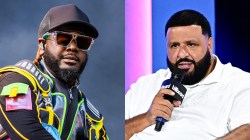
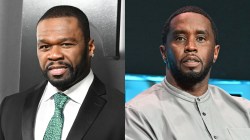
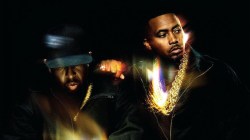
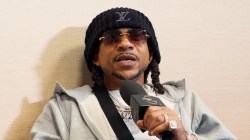
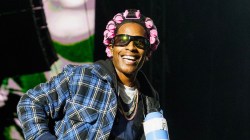
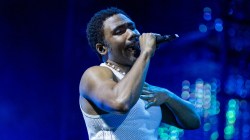

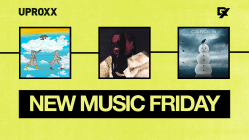
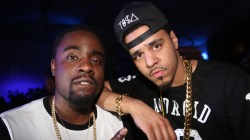

interesting
Nothing surprising, but I appreciate a well written opinion.
HipHopDX needs to have more content like this and less gossipy nonsense.
GOOD POST,SOME REAL SHIT WE CAN ALL RELATE TO AND BACK WHEN WE WERE IN OUR TEENS AND JUST FLYING THROUGH LIFE.
great read
good article. just wondering about his opinions on budden going off on mood musik?
Great editorial. Slim Shady LP was like my first CD…still remember my mom beating my ass when she heard me listening to it.
I sure did beat that ass.
Afterwords, I beat your ass.
hhahahahahahahah^^
hahahahahhahaha. my mom hated me listening to it too lol
Amazing article
shut up fruit
Fuck Drake! he’s a Jew dick lover!
Good read, you can see Em’s influence in alot whats out nowadays
finally a well composed article this week.
is that all you queers do?..just log in to ride on each others penis’?…yea good article…amazing article…well composed…shut up
difference between all those dudes is that Drake is a pussy. I’m not a big Tyler fan either but Drake is a pussy. Great article by the way.
Why the fuck is the Wu-Tang mentioned here.
holy isht this was an amazing article.
i absolutely agree…now may i see your green card moj..
they diss Lil Wayne, Drake, Soulja Boi and every other rapper that doesn’t scare them. It isn’t that Em is white… he isn’t a gangsta so he will never get street cred but those same artist that I just named don’t either. Get it.
i forgot Wiz’s bitch ass.
the same thing i said about hopsin in regard to tyler, the creator.
shut up you wear a skirt and live with mom’s
damn, i call this troll sh*t in the wrong articles.
Good fckin article. It clearly explains why Em is so popular. It has nothing to do with him being white, its because the stuff he raps about alot more people can relate to then the stuff Gucci Mane raps about. Hes a complex rapper who will go down in the Top 3 of all time.
“Lyrically Drake can’t hold a candle to pre-Relapse Eminem..” Why pre-Relapse? Relapse was in his top 3 albums lyrically…
And Drake is average lyrically anyway…
Drake is lyrically mediocre. He can’t really hold a candle to many emcees
Best fucking article of the year ! Am not or stan or anything, i just respect good music irrespective of the colour. Em is def a top 5 mc ever(arguably the best alive). P.s. Am black.
Clarification Hopsin Only Dislikes Tyler Because He has Been Doing The Same Exact Thing With Nowhere Near The Attention. Same Message, Same Aesthetic, Even Hobby (skateboarding).
Exactly.
spot on! i dont realy care what anybody says but any idiot can see hopsins flow, rhyme scheme and substance is a thousand times better than tylers
hopsin is garbage. kid has been out for more than 5 years now and still cant really move anything as far as sales go. His main fanbase are juggalos and european white kids who are 13 and get mad when their xbox360 gos three ring on them.
Hopsin was an actor first and is still acting. he was raised a mommas boy in hollywood and was put into acting to try and get fame. it is in his nature to act at everything he does. its why he cant truly freestyle or play an instrument. ever see hopsin lay down a fat beat on some drums or bust out a fat bassline on a bass instead of a computer. exactly. hopsin is basically talentless. he cant skate very well either.
This is retarded. people have been rapping about their emotions even before EM. and Drake’s Emotional raps differ way from em’s. Em is more kill you kill myself type of emo.
wether we like or not, no metter how wisely we debate E’m will always have skin colour advantage in hip hop industry, he does not just attract both black and white fans he also attract both black and white investors……
http://hh-o.blogspot.com/2011/08/major-vs-independent-rappers.html
Well written article
Thats Em’s biggest strength and also his downfall, so much of his music was rooted in his depression and Angst that now that he’s happy and better adjusted to his fame people get mad because they want more of that anger
Happens to all the great acts in music, Personally I like Em’s new music fine, it makes sense for where he is, a 40 year old guy sill making music full of “Teenage Angst” as you put it, would be kind of pathetic
make sense for real. never thought about it like that
..it’s all a little too touchy-feely for my tastes…
this is exactly how I feel about hip-hop nowadays.
This is article of the year!
Good article, brings back memories of my mom screaming at me for listening to his cd.alot of the artists now are taking some of his elements and trying to tweak it.
I’ve been an Eminem fan since Slim Shady LP, but I have to be honest. His success came more from his shock value than his so-called “teenage angst”. (BTW Em was well into his 20’s when he dropped his first album). He sold 10 million records because he set himself up as the anti-pop pop star by dissing boy groups and britney spears when they were all over MTV.
I think that Kanye West and Andre 3000’s openness to express their emotions and still be commercially viable had a much bigger impact on today’s artists like Drake, B.O.B., & Kid Cudi.
Thank Me Later, The Adventures of Bobby Ray, and Man On the Moon are a thousand times closer to The Love Below and 808’s and Heartbreaks than any Eminem album.
perfectly put plus ppl he had DRE and by that time DRE new how to run the game. and was master of marketing.. Peolpe under estimate dre’s business skills
@ ccccc
LOL @ Dre knowing how to market anything
Before he had Em, Dre dropped 3 albums in a row that everyone shitted on
If it wasnt for Shady Records promoting 50 Cent & G Unit promoting The Game, Aftermath wouldn t have anything in stores except Eminem records……
Remember the Truth Hurts Flop??….. And at least she got an album in stores, how many artists sign with Dre and cant even get a release date
Busta Rhymes & Eve were stars before they came to Aftermath, and they LOST SALES fuckin with Dre
Dre is a Musical Genius but a trained Monkey could run a record label better then him, he hit the Jackpot with Eminem but everything else, lol, Eazy & Jerry Heller sold Ruthless product, Suge Knight sold Death Row Product, Dre couldnt sell vitamin water to a dude in the desert on his death bed
Excellently put, “whatever”. I absolutely agree.
It’s funny (and a bit ironic), the author chuckles at peoples misinterpretation of NWA as gangsta rap, but at the same time he misinterprets the reason behind Em’s popularity and also what REALLY inspired the honesty-rap rappers: Kanye West.
Tyler and Hopsin are the equivalent of shock-rap Em. But I don’t see how Kanye, Drake or Kid Cudi are. To the contrary, the College Dropout laid out the template for how honesty-rap really works and these new rappers like Drake are a product of that.
@ Rodrick
Yet he has struck marketing deals with his heaphones, chrystler (with the beats sound system), shoes, watches, and his own brand of cognac. And it was his own idea for putting The Game on G Unit. Another good marketing decision i would say! He also stayed in connection with Joell Ortiz after he left the label, and had Ortiz ghostwrite 20 tracks for Detox, another good business idea
Alot of those Idea’s are Jimmy Iovine ideas, regarldess, Dre is one of the worst label heads in history and aftermaths lack of a release history is proof of that
Genius article. Best of the year !
Sorry I disagree. I agree that Em is emotional and vulnerable. But he clearly is still trying to be macho and hard at the same time. He clearly came up in the gangsta rap era and is influenced by it. Nas and Jay were also sometimes vulnerable. Ghostface too, Shit DMX was sometimes too, Em has much more in common with them than he has with Drake and such. I think Kanye is the dude this article should be about because Kanye has never tried to sound hard.
kanye fell off switched his music. he was way better before. his mom dying changed him for the worse.
It’s not Eminem’s impact leading to a lot of ’emotional’ music. It’s 2Pac. There would be no “Mockingbird” or “Hayley’s Song” without “Dear Mama”. Pac made it acceptable to be gangsta but vunruble. The way Eminem would have “Stan” and “Kim” on one album is following on from 2Pac who had “Keep Ya Head Up” and “I Get Around” on one album.
I see where ya comin from and I respect your opinion…also agree with you to an extent. But I think Eminem took it to another level than pac did. I feel like Eminem’s door to his life has always been wide open to his fans or anyone that wants to listen. People know him so well, they feel like they know him on a personal level. As private as em is away from music, in the booth he has nothing to hide. His enemies, his drug addictions, his wife, his daughter, his losses (proof), the media, the government, anything and everything. To say that Eminem wouldn’t have made tracks like ‘The Way I Am’ if there was no 2pac…to me that’s just silly. I understand certain artists pave the way for future artists and make certain things acceptable, but just because they did it first doesn’t mean artists like Eminem wouldn’t have broken barriers without people like 2pac. Eminem may have influenced ppl like say, tyler the creator or hopsin, but if Eminem never existed, we would still eventually get a ‘tyler the creator’ or a ‘hopsin’. Kool G rap might started that whole mafioso rap shit, for rappers like nas, big pun, big l, raekwon, biggie, and so on…He paved the way for rappers like this, and some of these rappers came out and outdid him. but anyways im rambling now, just thought id put in a couple pennies
@Paddy, you’re pretty much on the right track, but dont forget that Ice Cube came out with “Dead Homiez” back in 1990. now that song is the first “vulnerable” hip-hop song. 2Pac would then take it to another level with his own songs, especially “Dear Mama,” and then Eminem would create his own spin on vulnerable songs. but you’re still pretty much right about how 2Pac really made emotional music acceptable in the hip-hop world; just that Eminem could still make emotional hip-hop music without 2Pac paving the way, although he might get into that much later in his career and not in his first album…who knows.
WORD! Check out my album trailer!!
http://www.youtube.com/watch?v=6xR0u_pHBLk
Man fuck Eminem. That white boy can’t rap for shit. He was responsible for all the teenage white boys who can’t laid along with their “heroes” Nas and 2pac. Fuck them. Fuck B.o.B and Drake too. Those soft disney rappers need to stop rapping about airplanes or fireworks. Who listens to that gay shit anyways? Hopsin and Tyler are the ones who are actually saving Hip-Hop along with Gucci Mane and Justin Bieber. Hip-Hop is dead. Fuck your emo bullshit rap for chicks, listen to the real niggaz like Justin Bieber or our Lord Gucci Mane.
It’s Gucci Time!
I agree with everything you said, except about Drake, because he is the Coolest guy ever mayne, he’s so cool, he’s rad & #1 @ singing, he’s so hot right now, I just wish other singers were cool like Drake, he’s cool.
Da fuck you talkin bout I agrre that b.o.b amd drake are shit but eminem is clearly the best fucking rapper and he still is wayne is a no talnet bitch tyler the creator and hopsin and mac miller are the only good rappeers that are out at this very moment and did i see you say justin biber?? Sumtin is fucking wrong with you your the reson why rap is this way cuss you be likin the fake no talent rappers like chris brown young money solja boy etc they all suck
did you really just say justin bieber is saving hip hop…
loserrrrrrrrrrrrrrrr.
man your a straight up retard.
man i agree fool bieber is the 2nd comin of biggie
Why not bring up atmosphere. They have many emo songs.
Joe Budden anybody?
I’m so fuckin Hornwy Rite Now!!! I want Justin Bieber Naked on my bed right now!!! I wanna fondle his genitals and have cum in his tight ass
Me too, sigh, I wanna lick his butthole while listening to Drake. He’s so cool by the way.
Exacty homie!! I’d plow his cute ass. No Homo
Omar Burgess hit the nail right on the head with this article. So true.
Eminem did not start it. Everyone would agree that it was 2pac and Biggie that started talking about teen angst. The only thing that I would give em credit for, is broadening the audience. Bringing it more into white america than the great ones before him ever could.
no.
tl;dr
I assumed Charles Hamilton was in this but I guess not…
Fuck Eminem for for putting 50 Cent’s bitch ass on when everybody else knew Curtis has snitching except for the dumbass white boy that didn’t shit about was going on in the streets.
GReat article, well written
I appreciate it, listen I’m looking for place to stay….
super guicci wtf do u knoe nething bout hiphop eminem us da artist of da decade and also outsells gucci neday how come em dissed him and gucci cant diss back with his soft ass and did u hear wat game said happens if u diss eminem he’ll make u retire so if u wanna talk music add me on facebook justinkramer38@yahoo.com and drake a beast dont hate on him or weezy or jay -z or 4 sure da coldest person in da game slim shady
Fuck Eminem for putting 50 Cent’s bitch ass on when everybody else knew Curtis has snitching except for the dumbass white boy that didn’t shit about what was going on in the streets.
Fuck Eminem for putting 50 Cent’s bitch ass on when everybody else knew Curtis has snitching except for the dumbass white boy that didn’t know shit about what was going on in the streets.
Can’t be bothered to read it…read a few line about reakwon and deck verses on c.r.e.a.m. but thet’s all…
Eminem is fuckin worst rapper ever, i wanna laid him and sex him cuz hes da gay!! fuck it i fucking love to have him on my bed strapped for me to fuck him.
It’s Gucci Time!
It’s Cucci!!! Yes I spelled that right… R u serious?!?! That idiot doesn’t even know what a syllable is let alone spit multi syllable bars. Please!
To be honest it makes sense that my generation would adopt this “taboo” style of rap content. DX I don’t need to tell you that music sales are low in general, in fact when lady gaga and Micheal Jackson have new albums unreleased/posthumous music content it has been reported that music sales go up dramatically. So unless the FBI really decided to get harsher on copying its probably gonna stay that way. Remember just a week ago the Game tried to stir up trouble it failed and he was ignored but my point remains that my generation in particular are fucked financially so if anything this will occur more I predict. Lol sorry for the long ass comment.
It’s kinda funny with DMX being out of jail that the writer didn’t mention him. For a straight gutter a nigga DMX has always pour his heart out over his tracks.
I agree Eminem took the teen angst thing all the way. People are saying 2pac did it and all that but as the article pointed out, there’s a difference between talking about hood shit while being emotional and teen angst. Teen angst is something totally separate from talking about being in the hood, being vulnerable, etc. and it reaches a broader audience. I remember listening to Em back in the day and being mesmerized by the hatred of pop stars and complete irreverence and “fuck you” for no reason attitude. Seems a little silly now but it’s tailor-made for 12-16 year old badasses (or people who want to feel like it).
But I don’t see teen angst and emotional vulnerability as being the same thing so I’m not sure I agree that Eminem really paved the way for all these people now. He was probably one piece of the puzzle though.
you obviously did not grow up while 2pac was alive.2pac was never rapping about teen angst..EVER!2pac was always rapping hood shit..intelligent shit.but at the same time putting out club hits,radio friendly songs.but yes, teens did listen to every word pac spoke.teens at the time could easily relate to pac.eminem made rap acceptable to families in the suburbs.until they listened to his lyrics.white kids have always been into rap.i use to have a jewish friend growing up from beverly hills who had every westcoast cd imaginable…but music now,including eminems,sucks.its watered down.mixed up mashed up bullshit.lady gaga ft. lil wayne,drake,chris brown bullshit.everybodies legends come from ’90-2000.
THAT’S WHAT IM TALKING ABOUT!!!!!!!!
whoever the fuck are you Omar Burgess you just read my mind. you just worded it better. well i’m not a writer.
we’re discussing with my homies about this after i’ve read on twitter how Em do not have influence in hip hop. my reaction was a straight FUCK OUTTA HERE!!
that different kind of vulnerability (teen angst, self-depreciation, all-out disarming honesty) both songs and swag set him apart from the usual prevailing “machismo”. even vulnerable songs had that hood attitude mentality back then.
Em set the tone esp after coming from the gangster rap era. That slim shady alter ego did a lot too. It was the perfect way to expand creatively. The craziest part was that it wasn’t just a strategy but a genuine outlet of expression.
It’s one of them things i liked about Em. he can talk about the realest shit ever to having fun with rap. most rappers are stuck on one thing and it’s not necessarily a bad thing, but Em managed to combine all of these things. That’s why you
have rappers today who don’t worry as much to bare soul without the tough guy hood mentality to the crazy/dark/funny rappers. And you can’t tell me fellow rappers don’t step up their game around Marshall. If you really think about it any rapper can learn a thing or two.
Hip hop heads esp rappers take note!!!
You’re an idiot. He’s deconstructing Eminem’s influence on other Hip Hop artists. Socratically suggesting that his influence might be detrimental. Read it again.
This article is up for best article of the year, 2011. One of the realest articles of 2011…so far !
yeah…
Very Well written article…I don’t agree with it all, but 90% of it.
HIRE THIS GUY DX he makes a lot of great points and it makes you want to keep reading.
Hopsin sucks. played gimmicks and teen angst. his music appeals to kids
who music tastes have yet to evolve past flat beats and weak hooks. He
was an actor first and still is, dont forget this. this is all crap done
to try and get views off the backs of other artists. his own old label
dumped him because he just couldnt generate the hype. now youve got him
throwing out names and riding jock like hanes. the kid cant freestyle
and has no real ability other than to piece together loops on a computer
and half assed written battle type raps from his early AOL days and
forums where he would just spam all day long. still broke, still at
home, still cant skate good enough to generate any attention in that
dept, acting is crappy (see disney imdb), bell pepper nose aint helpin
either bruh. next.
And who has more money?
Sigh, another old school over everything blah blah blah
Shut up you little dip shit
Nirvana started the teen angst back in 1991, Eminem is hip hop’s Kurt Cobain there are so many similarities between the two.
Some of em’s inspiration on Albanians.He’s sikk
1.https://www.youtube.com/watch?v=aHBbcEnR_xs
2.https://www.youtube.com/watch?v=JWZKURhmV_8
3.https://www.youtube.com/watch?v=t5q_m4QzxSc